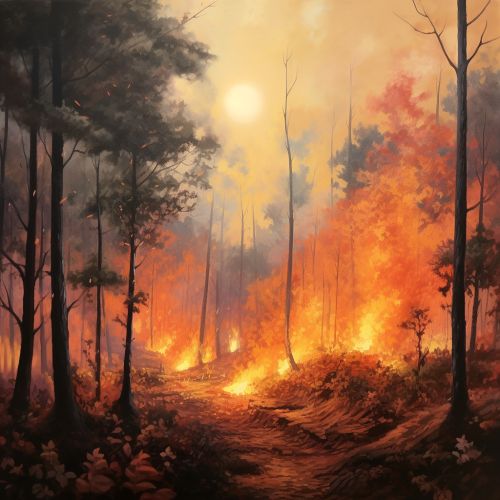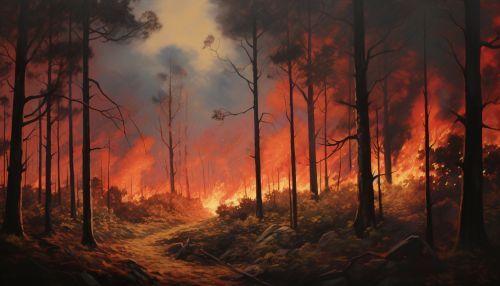The Ecology of Forest Fires and Their Role in Ecosystem Dynamics
Introduction
Forest fires, also known as wildfires, are a natural and integral part of many ecosystems worldwide. They play a crucial role in shaping the landscape, influencing the distribution and abundance of plant and animal species, and driving ecosystem dynamics. This article delves into the ecology of forest fires and their role in ecosystem dynamics.


The Ecology of Forest Fires
Forest fires are a complex ecological phenomenon. They are influenced by a variety of factors, including climate, vegetation, topography, and human activities. The frequency, intensity, and extent of forest fires can vary greatly depending on these factors.
Climate
Climate plays a significant role in determining the likelihood and intensity of forest fires. Regions with a Mediterranean-type climate, characterized by hot, dry summers and mild, wet winters, are particularly prone to forest fires. Similarly, regions with a continental-type climate, characterized by hot summers and cold winters, can also experience frequent forest fires.
Vegetation
The type and density of vegetation can significantly influence the occurrence and spread of forest fires. Dense vegetation can provide ample fuel for a fire, while certain plant species, such as eucalyptus and pine, contain oils that can make them particularly flammable.
Topography
Topography, or the physical features of the land, can also influence forest fires. Fires tend to spread more rapidly uphill due to the preheating of vegetation above the fire by the rising hot air.
Human Activities
Human activities, both intentional and unintentional, are a major cause of forest fires. Activities such as logging, land clearing, and arson can lead to the initiation of fires, while climate change, caused by human-induced greenhouse gas emissions, can exacerbate the conditions that lead to forest fires.
Role in Ecosystem Dynamics
Forest fires play a crucial role in ecosystem dynamics, influencing both the physical and biological components of an ecosystem.
Nutrient Cycling
Forest fires can play a key role in nutrient cycling by converting organic matter into mineral nutrients that can be readily used by plants. The heat from a fire can also lead to the volatilization of nutrients, which can then be deposited in other areas through atmospheric transport.
Succession
Forest fires can trigger ecological succession, a process by which the species composition of an ecosystem changes over time. Fires can create openings in the forest canopy, allowing light to reach the forest floor and enabling the growth of shade-intolerant species.
Biodiversity
Forest fires can influence biodiversity by creating a mosaic of different habitat types, each with its own unique set of species. Some species are particularly adapted to survive or even thrive in post-fire environments.
Conclusion
Forest fires, while often viewed as destructive events, are a natural and integral part of many ecosystems. They play a crucial role in shaping the landscape, influencing the distribution and abundance of species, and driving ecosystem dynamics. Understanding the ecology of forest fires and their role in ecosystem dynamics is crucial for effective forest management and conservation.
